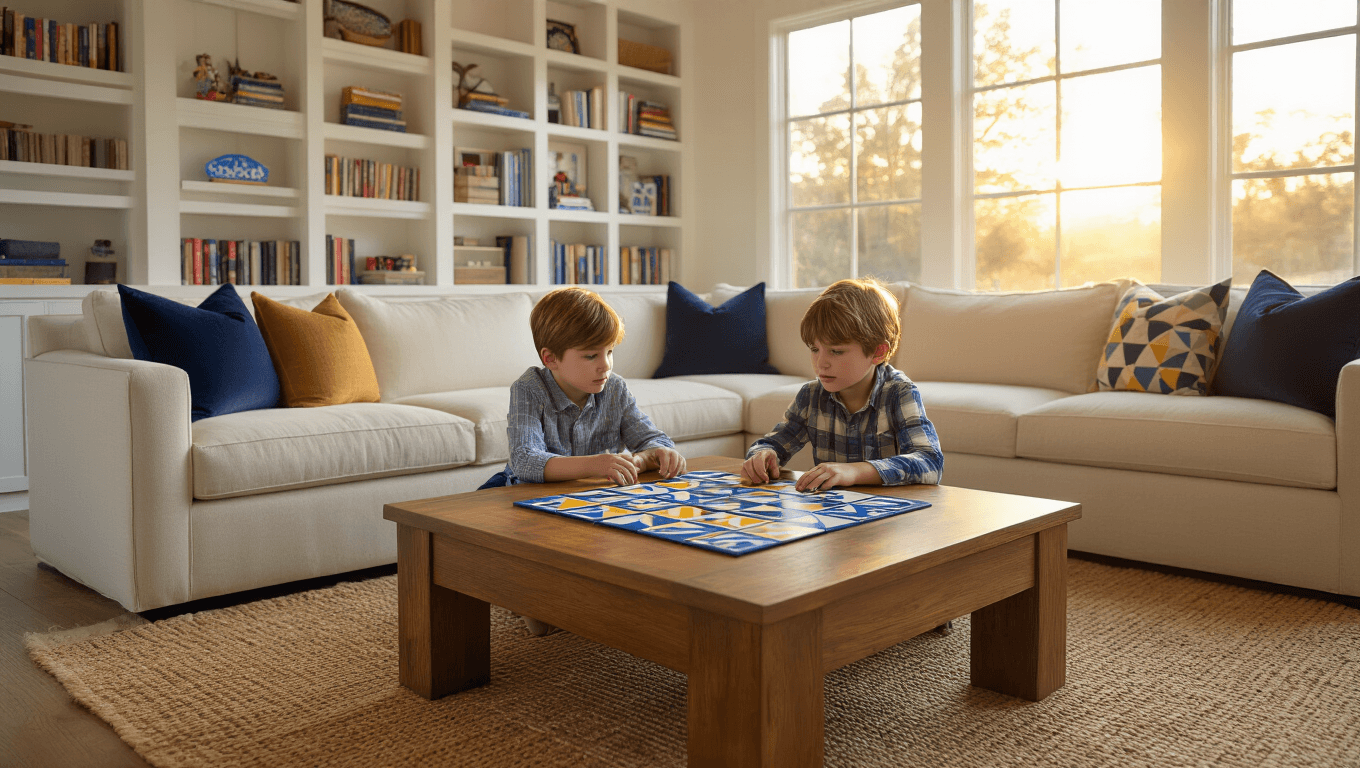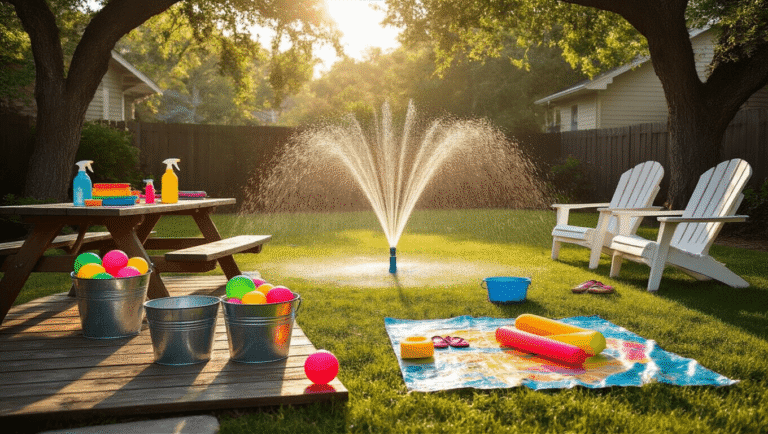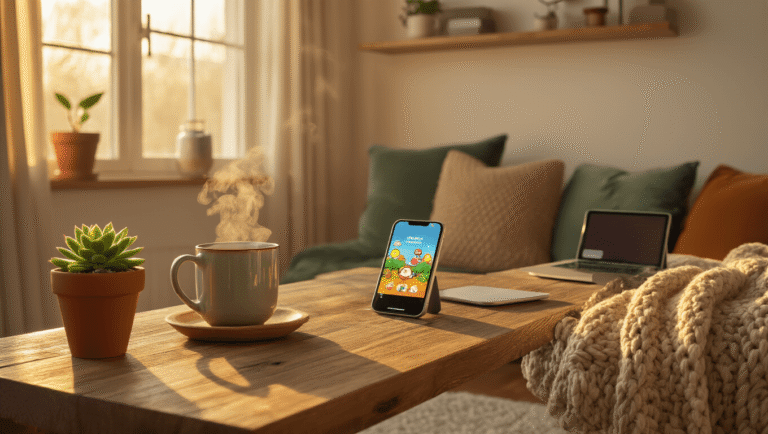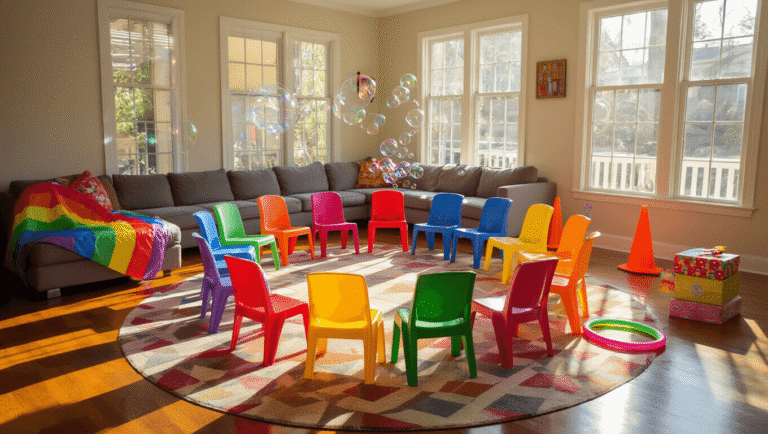This post may contain affiliate links. Please see my disclosure policy for details.
Kids Games: A Transformative Landscape
Contents
Kids games have transformed dramatically over the past decade, and as a parent who’s navigated countless options, I can tell you the landscape is both exciting and overwhelming.
You’re probably wondering which games actually deliver on their educational promises without boring your child to tears. Maybe you’re tired of buying expensive toys that get abandoned after a week. Or perhaps you’re concerned about screen time but recognize that digital games aren’t going away.
I’ve been there, testing everything from classic board games to the latest educational apps with my own kids and dozens of others through my work as a child development consultant.
Why Board Games Still Rule the Playroom
Board games create magic that screens simply can’t replicate.
There’s something powerful about sitting around a table, looking into each other’s eyes, and sharing genuine laughter when someone makes a brilliant (or hilariously bad) move.
Strategic Thinking Games That Actually Engage
Azul has become my go-to recommendation for kids aged 8 and up who need to develop planning skills. Watching children strategize about tile placement while creating beautiful mosaics never gets old. The game teaches resource management without feeling like a lesson, and every playthrough brings new challenges.
You can grab Azul board game and watch your kids’ strategic thinking explode.
Rush Hour deserves a spot in every family’s collection. This single-player logic game starts simple but quickly challenges even adults. I’ve seen 6-year-olds work through problems with determination that amazes their parents.
- Beginner cards: Perfect for ages 6-8
- Intermediate challenges: Keep 9-12 year olds engaged
- Expert level: Stumps teenagers and adults alike
The Rush Hour logic game transforms car trips and quiet afternoons into productive brain workouts.
Cooperative Games That Build Teamwork
Zombie Kidz Evolution changed everything I thought I knew about kids’ cooperative games.
This isn’t your typical “everyone wins or everyone loses” setup. The game evolves based on your successes, unlocking new materials and challenges as kids work together to save their school from cartoonish zombies.
My 7-year-old nephew went from being fiercely competitive to genuinely celebrating his sister’s good moves after playing this game regularly.
Key benefits I’ve observed:
- Kids learn to communicate strategy effectively
- Shy children gain confidence in group settings
- Siblings actually start helping each other succeed
Digital Platforms That Don’t Rot Brains
Let’s be honest about screen time.
Pure restriction doesn’t work in 2024. Instead, I focus on finding digital experiences that genuinely enhance learning while keeping kids engaged.
PBS Kids Games: The Gold Standard
PBS Kids Games offers over 250 educational activities featuring characters kids already love.
I’ve watched Daniel Tiger teach emotional regulation more effectively than many adult conversations. Wild Kratts games spark genuine interest in science and nature. Lyla in the Loop develops problem-solving skills through storytelling.
What makes PBS Kids special:
- Available in English and Spanish
- Works offline during car trips
- Zero inappropriate advertisements
- Age-appropriate challenges for preschool through early elementary
The platform creates a safe digital environment where learning feels natural rather than forced.
ABCya and Education.com: Curriculum That Clicks
ABCya transforms traditional worksheets into interactive adventures.
I’ve seen struggling math students suddenly “get it” when numbers become characters in engaging storylines. The typing games actually prepare kids for real-world computer skills. Basic coding activities introduce logical thinking without overwhelming complexity.
Education.com takes curriculum alignment seriously. Teachers and parents can find specific activities that reinforce classroom learning. Reading comprehension games make literature exploration exciting rather than tedious.
Video Games That Parents Can Actually Approve
Gaming doesn’t have to mean violence or mindless entertainment.
Platform Adventures That Teach
Sackboy represents everything I love about modern kid-friendly gaming.
The vibrant world of Craftworld encourages creativity while developing hand-eye coordination. Cooperative play teaches children to work together rather than compete destructively. Problem-solving elements challenge kids without creating frustration.
Playing Sackboy: A Big Adventure with your kids creates shared experiences and genuine bonding opportunities.
Nintendo Switch: The Family Gaming Champion
Nintendo consistently delivers age-appropriate content that doesn’t talk down to kids.
Kirby and the Forgotten Land offers adventure without scary content. Mario Kart 8 Deluxe teaches racing strategy and good sportsmanship. Animal Crossing: New Horizons develops planning skills and social interaction. Super Mario Odyssey encourages exploration and creative problem-solving.
The Nintendo Switch console has revolutionized family gaming by making multiplayer accessible and fun for all ages.
Mobile Apps That Actually Teach
Toddler apps require extra scrutiny because attention spans are precious.
Montessori-Based Learning
Kids Games: For Toddlers 3-5 includes 25+ activities based on proven Montessori methods.
I’ve watched 3-year-olds develop color recognition through these games faster than traditional flashcard methods. Shape sorting activities improve fine motor skills. Counting games create number familiarity without pressure.
Educational Games for Kids (Funny Food 2) features 15 learning activities designed by early education specialists.
The












